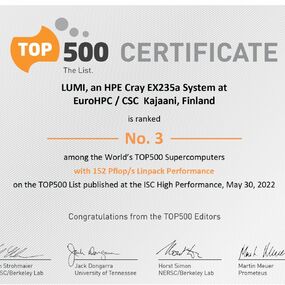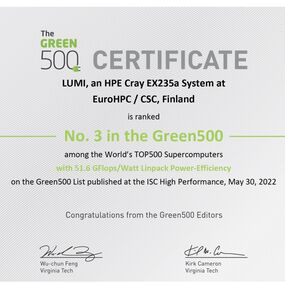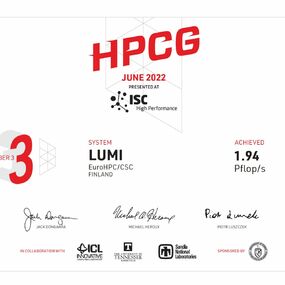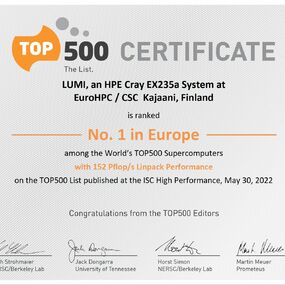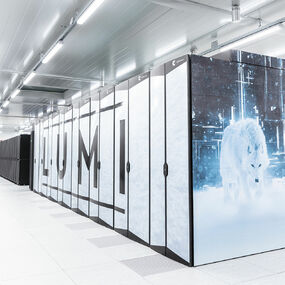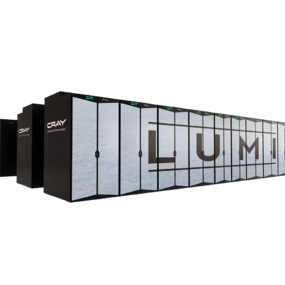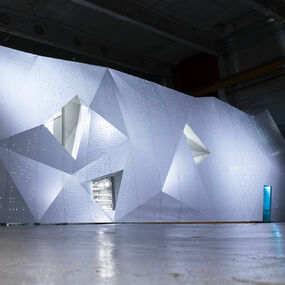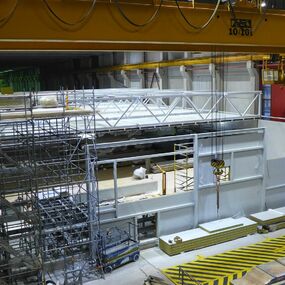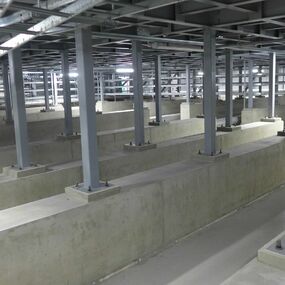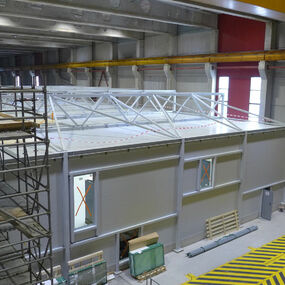The LUMI supercomputer, with a performance of 531,5 PFlop/s, is the most powerful supercomputing system in Europe. The LUMI supercomputer is installed in Kajaani, Finland, and is a joint investment of the EuroHPC Joint Undertaking and the LUMI consortium. The Czech Republic is also part of the LUMI consortium, thanks to the involvement of IT4Innovations.
In the year of its installation, 2022, it ranked 3rd in the TOP500, Green500, and HPCG lists. In Europe, it was the clear leader in all of the lists.
Thanks to the IT4Innovations' membership in the LUMI consortium, academic users from the Czech Republic can also apply for resources on this supercomputing star through IT4Innovations' Open Access Grant Competitions.
IT4Innovations participates in the implementation of this project as part of its management structure, provides expert support to users
within the so-called LUST (LUMI user support team), and develops software tools such as HyperQueue, which enable users to use the available computational resources of LUMI effectively.
The LUMI GPU partition system architecture:
- The LUMI system is supplied by Hewlett Packard Enterprise, based on an HPE Cray EX supercomputer.
- The GPU partition consists of 2,978 nodes, each node with one 64 core AMD Trento CPU and four AMD MI250X GPUs.
- Each GPU node features four 200 Gbit/s network interconnect cards, i.e. has 800 Gbit/s injection bandwidth.
- The committed Linpack performance of LUMI-G in its final configuration is 379,7 Pflop/s.
- The MI250X GPU comes with a total of 128 GB of HBM2e memory offering over 3.2 TB/s of memory bandwidth.
- A single MI250X card is capable of delivering 42.2 TFlop/s of performance in the HPL benchmarks.
The LUMI CPU partition system architecture:
- In addition to the GPUs in LUMI, there is another partition (LUMI-C) using CPU-only nodes, featuring 64-core 3rd-generation AMD EPYC™ CPUs and between 256 GB and 1,024 GB of memory.
- There are 2,048 dual-socket CPU nodes in total.
Additional technical data about the LUMI supercomputer:
- LUMI also has a partition with large memory nodes, with a total of 32 TB of memory in the partition.
- For visualization workloads, LUMI has 64 Nvidia A40 GPUs.
- LUMI’s storage system, based on the Cray Clusterstor E1000 storage system from HPE, consists of three components. First, there is an 8-petabyte all-flash Lustre system for short-term fast access. Next, there is a longer-term, more traditional 80-petabyte Lustre system based on mechanical hard drives.
- For easy data sharing and project lifetime storage, LUMI has 30 petabytes of Ceph-based storage.
- LUMI also has an OpenShift/Kubernetes container cloud platform for running microservices.
- All the different compute and storage partitions are connected to the very fast HPE Slingshot interconnect of 200 Gbit/s.
- LUMI takes nearly 400 m2 of space, which is about the size of two tennis courts.
- The weight of the system is nearly 150 metric tons.
For more about the LUMI supercomputer, see HERE.

